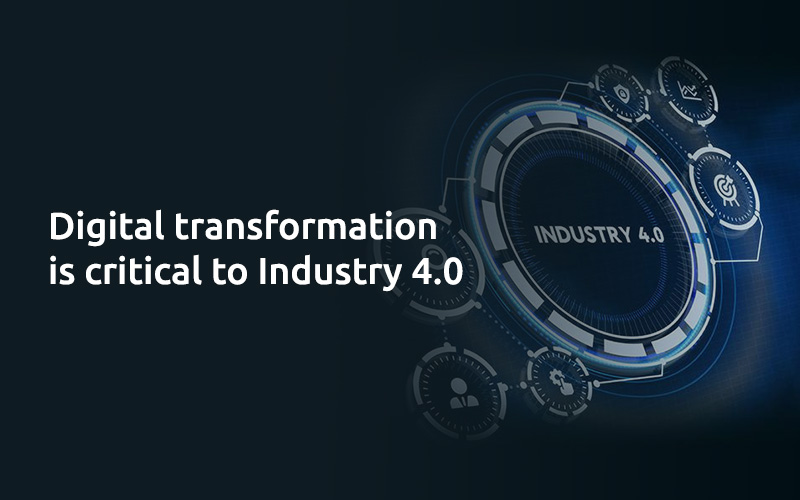
Digital transformation is critical to Industry 4.0
In response to market demands, manufacturers are under growing pressure to create creative designs and scale up production.
Savings from digital transformation in manufacturing range from 30% to 50%.
Robotics, digital assistants,Industry 4.0, IoT, AI, and ALM are being applied across the manufacturing value chain to coordinate design, manufacturing, and maintenance processes, boost production efficiency, and lower long-term costs.
Industry 4.0 heralds a shift in the traditional manufacturing landscape.
To build a cyber-physical environment, Industry 4.0 combines IT (Information Technology) with OT (Operational Technology).
Automation, data interchange, cloud computing, robots, Big Data, Artificial Intelligence, IoT, and technological trends are all employed to achieve industrial objectives and intelligent production processes that interact with people, new technologies, and innovation.
Automation is critical for speed and efficiency, allowing businesses to optimize production workflows, inventory, works in progress, and choices. With the addition of CIT systems, different teams in different geographic areas can access important data, allowing for faster, more collaborative, and transparent communication and making data in the cloud more stable.
These technologies are assisting in the digital transformation of manufacturing by integrating previously fragmented systems and processes via interconnected computer systems across the value and supply chain.
Embracing Industry 4.0, digital manufacturing, and the interconnectedness that comes with it provides a plethora of advantages for businesses, including increased agility, flexibility, and operational effectiveness.
Machine learning models and visualization of data can help with data analytics processes. In general, machine learning approaches use strong computational algorithms to analyze enormous data sets, whereas visualizations help manufacturers better understand the story the data tells.
Finally, by gathering and analyzing previously isolated data sets, businesses are now able to discover new ways to optimize the processes that have the largest impact on yield.
Manufacturers may now develop digital twins of processes, production lines, factories, and supply networks thanks to Industry 4.0’s digital transformation. Data from IoT sensors, gadgets, PLCs, and other internet-connected things is gathered to construct a digital twin. Digital twins can help manufacturers boost efficiency, streamline procedures, and design innovative goods. Manufacturers can evaluate modifications to a production process, for example, to find ways to reduce downtime or increase capacity, by simulating the process.
For manufacturers looking to take advantage of Industry 4.0, establishing a hybrid multi-cloud IT infrastructure is a critical component of digital transformation. When a corporation uses two or more public and private clouds to handle its computing workloads, it is referred to as hybrid multi-cloud.
This allows them to optimize their workloads across all of their clouds, as some environments are more suited to or cost-effective for specific workloads. Manufacturers seeking digital transformation and a safe, open environment can migrate their existing workloads from on-premises to the best cloud environment available.

